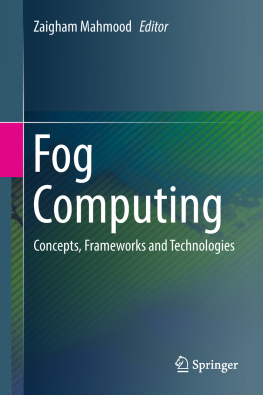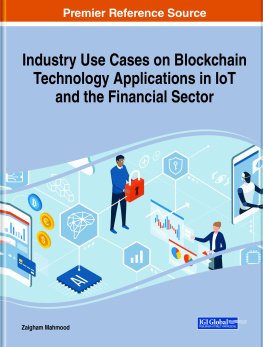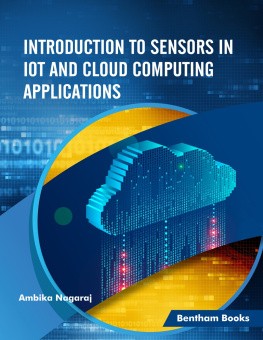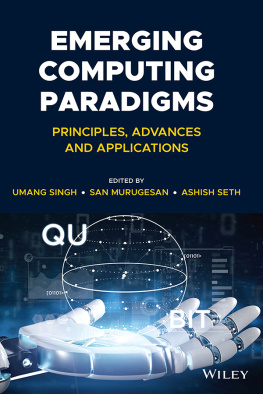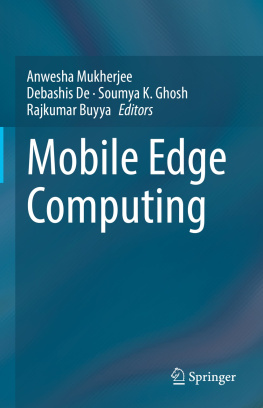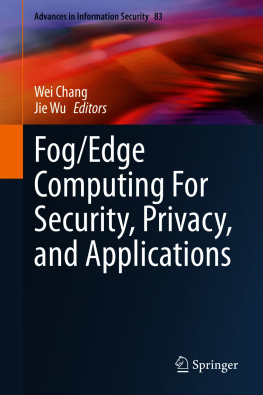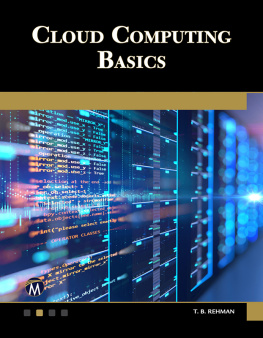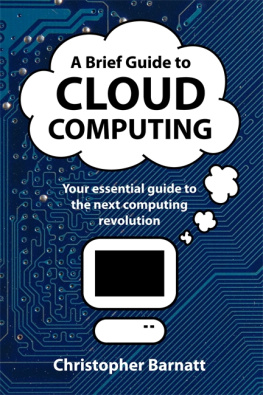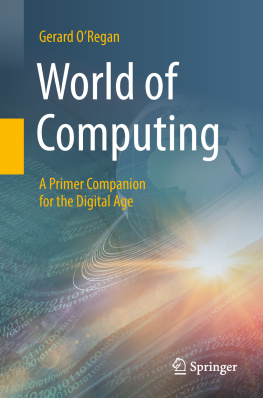Zaigham Mahmood (editor) - Fog Computing: Concepts, Frameworks and Technologies
Here you can read online Zaigham Mahmood (editor) - Fog Computing: Concepts, Frameworks and Technologies full text of the book (entire story) in english for free. Download pdf and epub, get meaning, cover and reviews about this ebook. year: 2018, publisher: Springer, genre: Romance novel. Description of the work, (preface) as well as reviews are available. Best literature library LitArk.com created for fans of good reading and offers a wide selection of genres:
Romance novel
Science fiction
Adventure
Detective
Science
History
Home and family
Prose
Art
Politics
Computer
Non-fiction
Religion
Business
Children
Humor
Choose a favorite category and find really read worthwhile books. Enjoy immersion in the world of imagination, feel the emotions of the characters or learn something new for yourself, make an fascinating discovery.
- Book:Fog Computing: Concepts, Frameworks and Technologies
- Author:
- Publisher:Springer
- Genre:
- Year:2018
- Rating:3 / 5
- Favourites:Add to favourites
- Your mark:
Fog Computing: Concepts, Frameworks and Technologies: summary, description and annotation
We offer to read an annotation, description, summary or preface (depends on what the author of the book "Fog Computing: Concepts, Frameworks and Technologies" wrote himself). If you haven't found the necessary information about the book — write in the comments, we will try to find it.
This authoritative text/reference describes the state of the art of fog computing, presenting insights from an international selection of renowned experts. A particular focus is provided on development approaches, architectural mechanisms, and measurement metrics for building smart adaptable environments. The coverage also includes important related topics such as device connectivity, security and interoperability, and communication methods.
Topics and features: introduces the core concepts and principles of fog computing, and reviews the latest research and best practice relating to fog/edge environments; discusses the vision for an Internet of Things (IoT) in terms of fog computing and other related distributed computing paradigms, such as cloud computing; presents a survey of the key issues and broader aspects of the fog paradigm, as well as the factors that affect adoption of fog computing; examines frameworks and methodologies for fog-based architecture design, improving performance, and measuring quality of experience; proposes tools and methodologies for analyzing large amounts of sensor data from smart city initiatives; describes approaches for designing robust services, management of data-intensive applications, context-aware data analysis, and vehicular networking; identifies potential future research directions and technological innovations in relation to distributed computing environments such as the IoT.This enlightening volume offers essential perspectives for researchers of distributed computing and computer networking, as well as for advanced undergraduate and graduate students pursuing interests in this area. Professional engineers seeking to enhance security and connectivity in their IoT systems will also find this work to be a valuable reference.Zaigham Mahmood (editor): author's other books
Who wrote Fog Computing: Concepts, Frameworks and Technologies? Find out the surname, the name of the author of the book and a list of all author's works by series.

